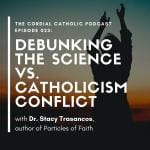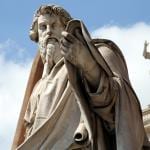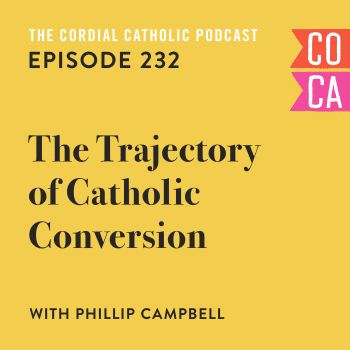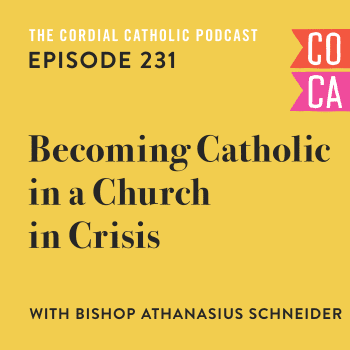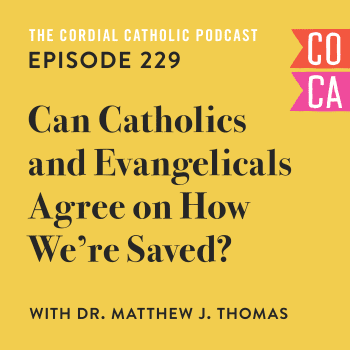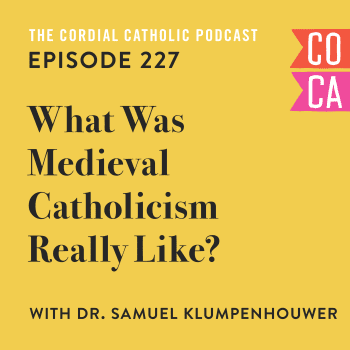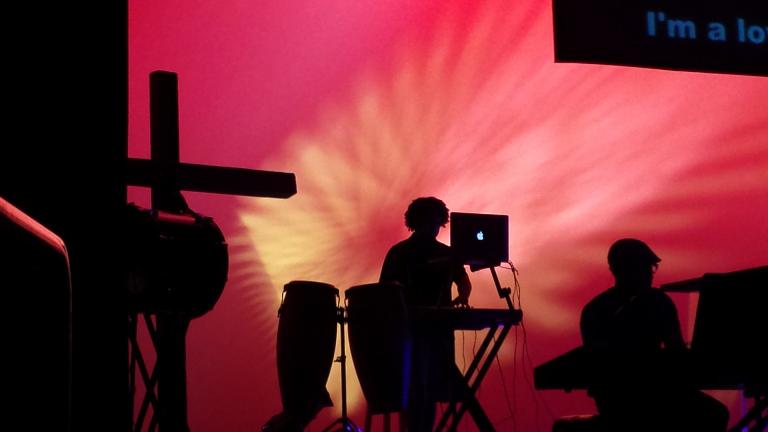
As a non-denominational evangelical Christian I thought the Catholic Church was just another denomination.
Just another expression of Christianity. And, for the most part, a pretty crappy and corrupt one.
I thought that Catholics worshiped statues, they elevated the Virgin Mary beyond a reasonable degree, and they didn’t have a personal relationship with Jesus. Not like I had, anyway.
But as I began to dig into history my perspective on denominationalism and Catholicism began to change. I was shocked, in fact, to discover that the Catholic Church wasn’t simply another denomination of Christianity. Instead, as history made plainly clear, the Catholic Church traces itself back to the beginning of Christianity.
The Catholic Church, from history, came first.
The plethora of denominations—ten of thousands of them, by some counts—came from the Catholic Church. These denominations spit from the Catholic Church or split from churches which split from the Catholic Church in the 500 years since the Protestant Reformation.
So, as history bears out, the Catholic Church is squarely not just another Christian denomination.
So why did I believe this?
First, my belief was predicated on the idea that the Body of Christ, as we called it in my evangelical churches, was merely an invisible collection of Christian believers. If there wasn’t a single, unified, physical infrastructure called the Body of Christ then there’s nothing to spilt from.
I believe that the Catholic Church was merely another Christian denomination because I believed that anyone, all Christians, who professed Christ were merely part of this invisible network of believers. How do you split from an invisible network? Well, you don’t. So we were all Christians and Catholics, as badly as they behaved, were merely part of this same network. We had differences, sometimes major and sometimes minor, over certain theological points but we were all Christians—the Body of Christ.
The problem with this belief, however, is that it wasn’t biblical, it wasn’t historical, and it wasn’t even logical.
Simply summarized, Jesus prayed that Christian believers would be “one as [I and the Father] are one” (John 17:1-26). Jesus and the Father weren’t merely invisibly connected around some loosely defined doctrine. Jesus and the Father were absolutely one, completely unified. Jesus didn’t intend to merely create an invisible body of believers based around an undefined collection of beliefs, he intended to create an organization of believers that were absolutely unified.
Another clue comes in Matthew’s gospel where Jesus explains how to settle a dispute between believers. The final step, says Christ, is to “bring it before the church” (Matthew 18:15-20). If Jesus intended Christians to be merely an invisible collection of believers with vastly different theological opinions how can a dispute possibly, in any meaningful sense, be reserved by “the church” when someone can simply skip down the street to a church which agrees with their theological point.
Both of these passages, the words of Christ, only make sense if the Church Christ established is absolutely united.
My understanding of the Church of Christ as an invisible collection of believers, and therefore the Catholic Church as just another part of that invisible network, was also historically untenable.
After all, from the Early Church right through to the Orthodox Schism in 1066, all Christians were clearly and visibly united under the bishops. While the Orthodox Schism is certainly a wound in the side of unity (and both sides remain committed and actively working on reconciliation) it is beyond historical dispute that the church was Catholic. United and universal. Physical and tangible—just like Jesus prayed for.
While some may argue that Constantine in the 300’s corrupted the church and it’s authority was lost a simple test proposed by historians is this: examine the doctrine, dogma, and practice of the Catholic Church before and after Constantine. In reality, as historical fact, Constantine’s supposed “legalizing of Christianity” (an overblown fact to be sure) did not change or alter the beliefs of these Early Christians. It was not a corruption of the Church, the visible collection of Christians, and did not some how drive the true Christians underground.
It’s simply an untenable position.
And, finally, it isn’t logical. To propose that Jesus intended to found an invisible Church of which Catholicism is simply another branch just doesn’t make sense. Because for the entire history of the Catholic Church, stretching back to the bishops who received their ordinations from the apostles, we see an apostolic succession which sees itself as visible, united, and hierarchical. An argument to the contrary seems to miss the whole point. If the Church was meant to be invisible and not bound together around strict doctrine, dogma, and practice, were the very earliest Christians, like St. Clement who was a disciple of John the Apostle, wrong? Clement writes of authority and doctrine and dogma and understands the earliest Church as clearly structured.
Not a loose collection of believers.
St. Ignatius, writing only a little bit later, makes it clear in his volumes of writing, that there are some Christians who are outside of the fold because of their beliefs. They are heretics and shouldn’t be considered true believers because they don’t profess a faith in things which the Catholic Church, tracing its lineage back through the apostles to Christ (a short trip back in Ignatius’s day) held to be true.
The Early Church was the Catholic Church which clear lines of who was in and who was out. Not an invisible collection of people professing a vague belief in Christ but differing in everything else.
What has changed today?
Well, nothing.
The Church can’t, and hasn’t, suddenly decided to stop seeing itself in direct lineage from the apostles. This is what the Catholic Church still believes—and can credibly trace!
As a non-denominational evangelical, however, I knew nothing of this. I assumed, because I believed the Christian Church to be defined as an invisible collection of believers, that everyone believed this too. The Catholic Church was just another denomination because we were all just invisibly linked anyway—that was our unity, although it hard is unity at all.
I’ve come to see that I was wrong.
Biblically, historically, and even logically, the Catholic Church is not just another denomination in a milieu of Christianity but it is the Church, founded by Christ, from which all denominations broke off from. And, certainly, some Protestant Christians may feel strongly that there was a reason for this. I grant you that you may feel that way too. But best feel that way with wide open eyes, walking in full recognition of the schism you find yourself in. And pray, ultimately, for unity once more.

